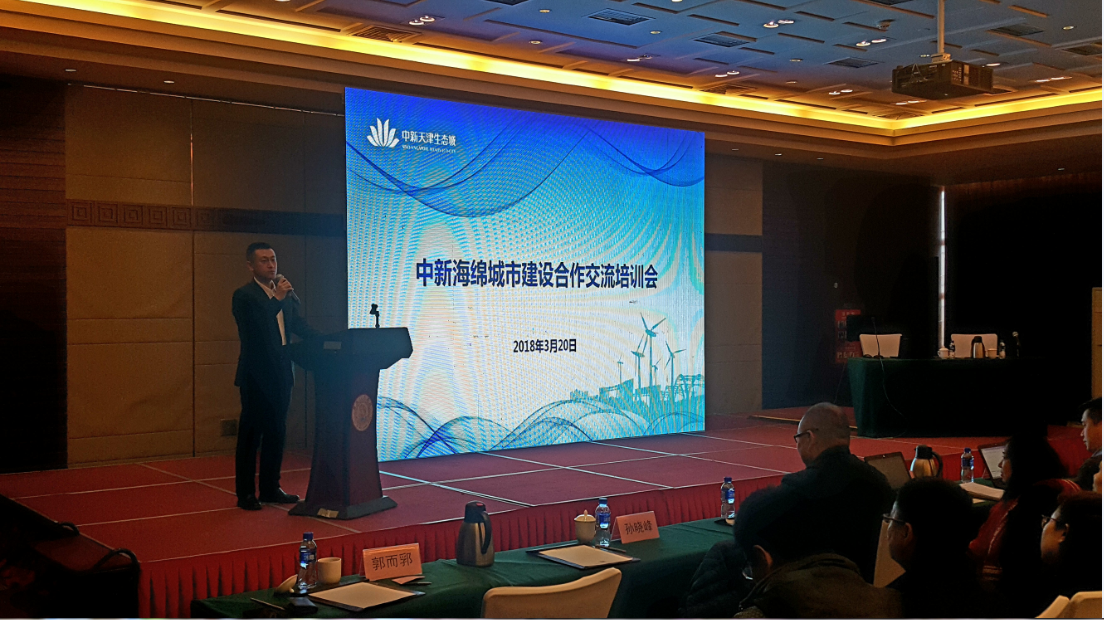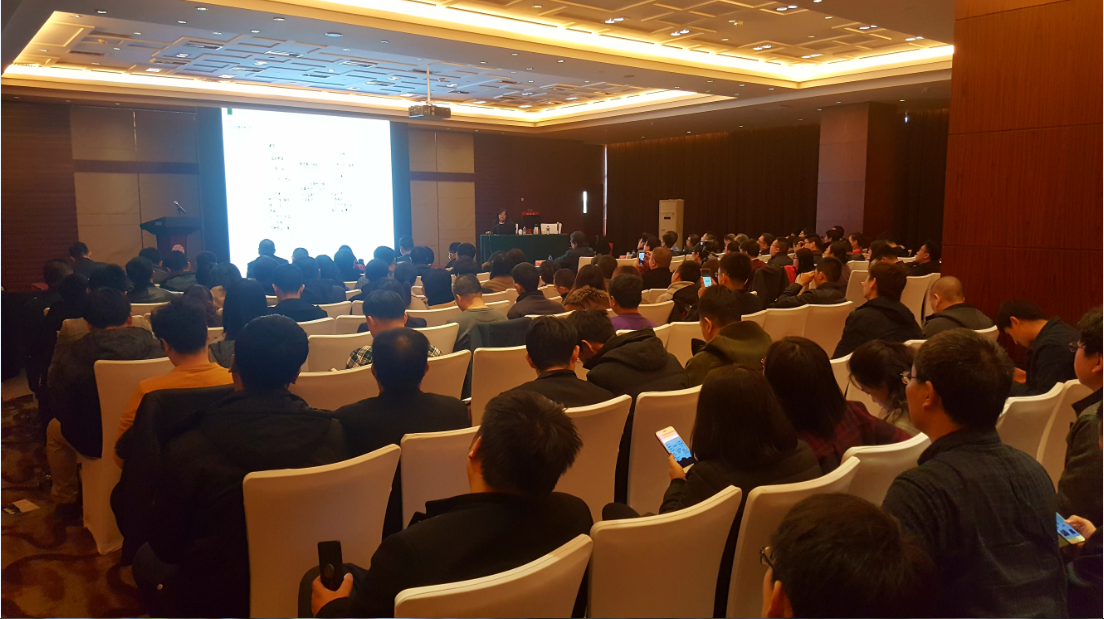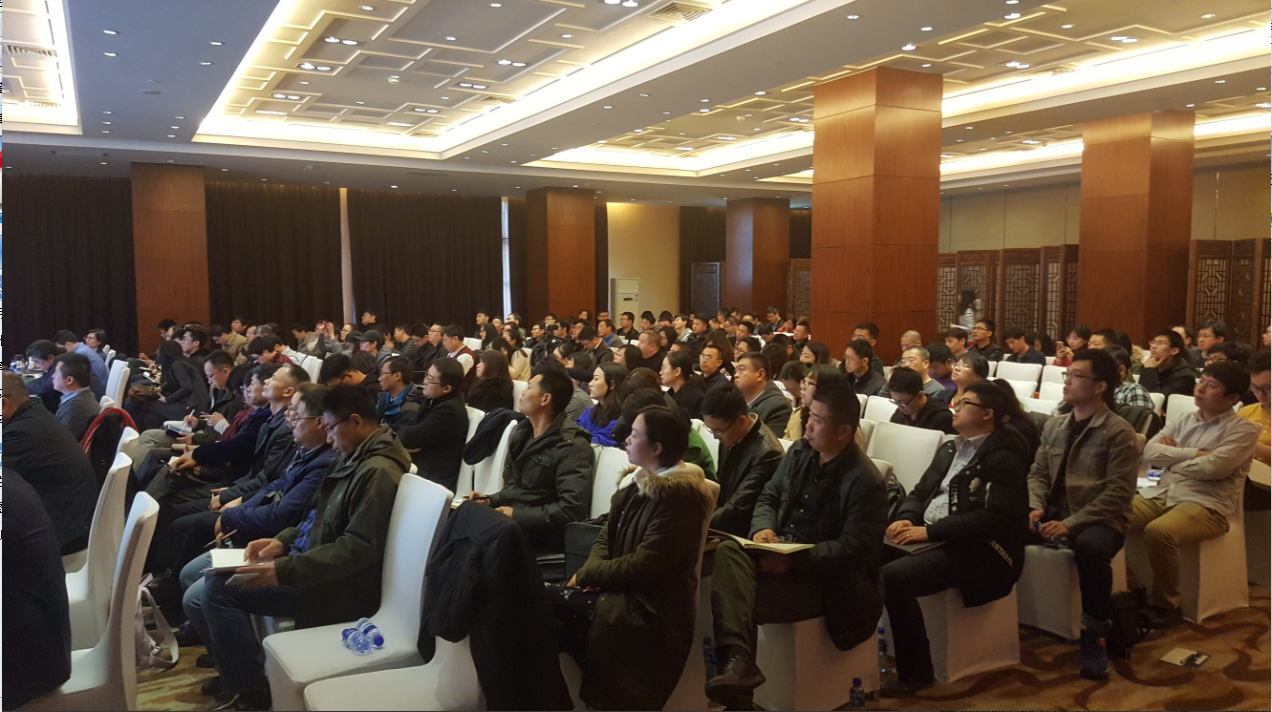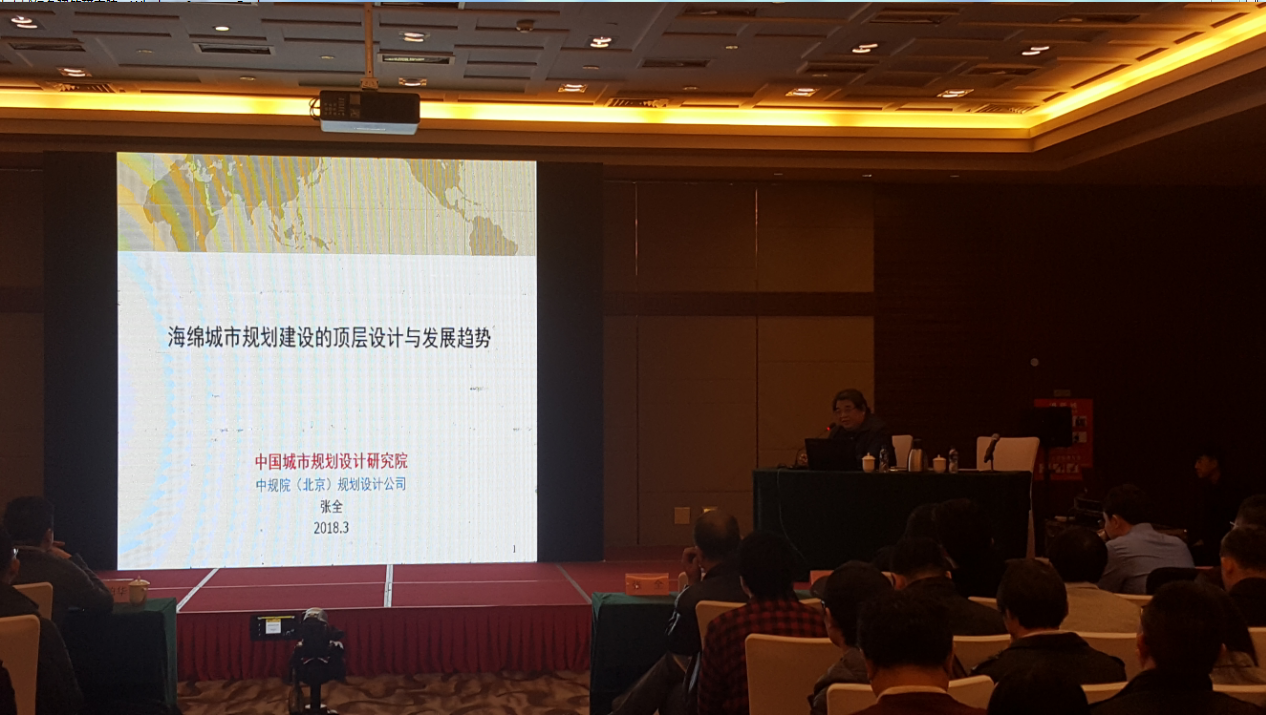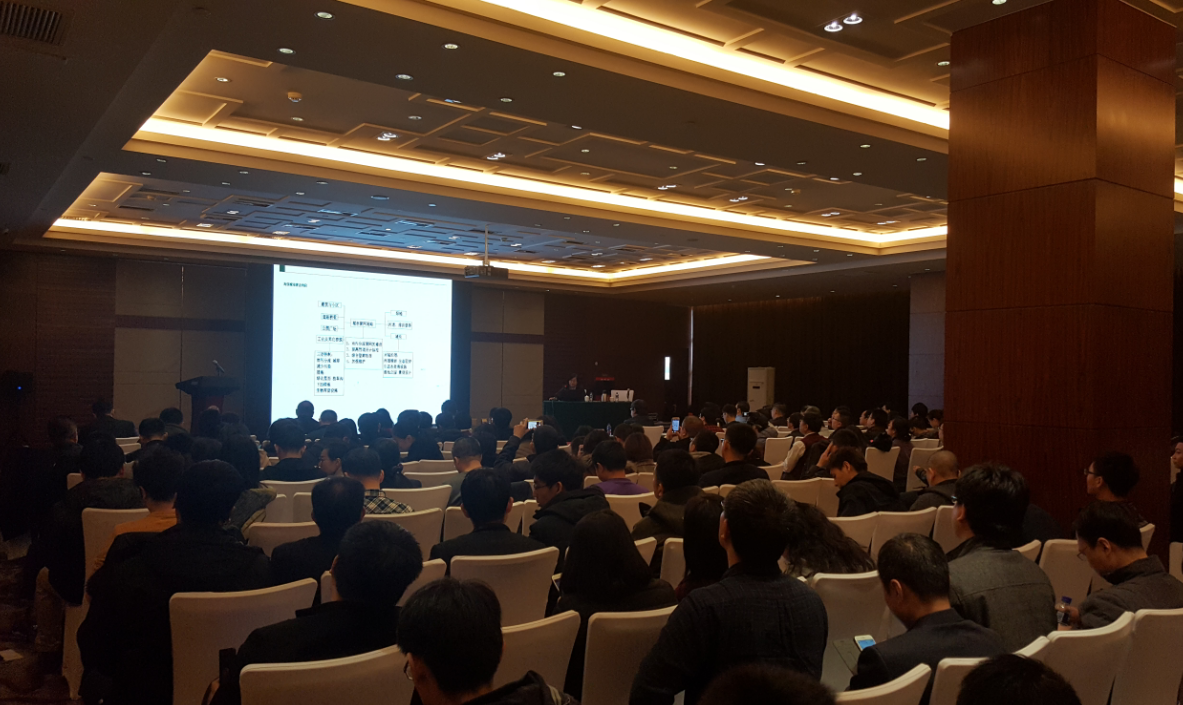Eco-city held the "Sino-Singapore Sponge City Construction Cooperation Exchange Meeting" to give full play to the advantages of cooperation to build an international sponge city
As one of the pilot areas to build sponge cities in China, the Sino-Singapore Tianjin Eco-City has comprehensively promoted the construction of sponge cities, and has launched 49 pilot projects. In order to give full play to the advantages of Sino-Singapore cooperation and build the eco-city into an international sponge city, on March 20, experts from China Academy of Urban Planning, Beijing Institute of Architectural Design and Research, and Singapore Public Utilities Board from both China and Singapore discussed sponge City in the "Sino-Singapore Sponge City Construction Cooperation Exchange Meeting", focusing on construction concepts, typical cases, management experience and other aspects. The "China-Singapore Sponge City Construction Cooperation and Exchange Training Session" was jointly sponsored by the Sino-Singapore Tianjin Eco-City Management Committee and the Public Utilities Board of Singapore, and hosted by the Tianjin Eco-City Green Building Research Institute. It has attracted more than 200 people from various construction units, design units, construction units, scientific research institutes, universities, technical units and other relevant personnel engaged in sponge city construction. The conference focuses on many hot spots and difficult issues in the current sponge city construction, and is a high-end conference for the industry to exchange ideas and discuss the development prospects of the industry. It is committed to building a Sino-Singapore cooperation platform, solving practical problems encountered in all aspects of sponge city construction and development by learning from advanced models and practices, and providing technical guidance for sponge city construction. As a strategic cooperation project between the governments of China and Singapore, since its establishment in 2008, the Sino-Singapore Tianjin Eco-City has adhered to the purpose of "green, low-carbon, environmental protection and livable", actively introduced the concept of low-impact development, and clearly proposed the principle of "strengthening the reuse of reclaimed water, rainwater collection and seawater desalination, and implementing differentiated water supply" in the index system and overall planning. The target of 50% utilization rate of non-traditional water sources has been established to guide urban development and construction. In April 2016, Tianjin was approved for the second batch of sponge city construction pilot. After becoming a pilot area in Tianjin, Eco-City actively responded to the call of the state, organized relevant experts and design teams to sort out the construction of the eco-city, based on the actual situation of the city, compiled the "Tianjin Eco-City Sponge City Special Plan (2016-2030)". Based on the advanced experience of water resources utilization in Singapore, the principles of low-impact development and rainwater utilization of "planning-leading, ecological priority, process control, focus on implementation, and multiple investment" were determined, the Sponge City project database was established, and the project implementation plan was formulated to fully promote the construction of sponge city projects. So far, the eco-city Sponge City has launched 65 pilot projects, accounting for 96 percent of the total number of pilot projects. Among them, 16 projects have been completed, 30 projects are under construction, and 19 projects are under design. The investment has been 1.793 billion yuan, accounting for 44% of the total investment.
1. Control black and smelly water bodies and improve urban water environment The eco-city area is short of fresh water resources, one-third of which is polluted water surface. In particular, the water quality of Yingcheng sewage reservoir, which is located in the middle of the eco-city, has deteriorated seriously and is a poor Class V water body. After the construction of the eco-city began, the treatment of the sewage reservoir was listed as the "No. 1 project" of the eco-city environmental construction work and the primary task of the sponge city construction, invested 1 billion yuan, and entrusted research institutions such as the Chinese Academy of Sciences and Nankai University to investigate the background conditions of the sewage reservoir and formulate a scientific treatment plan. After three years of hard work, the bottom mud and water body of the sewage reservoir were radically cured, and the greening project around the reservoir was started, and ecological revetment and slow green way were built. At present, the water quality of the reservoir is stable in four types of water bodies all the year round, reaching the standard of landscape water, and becoming the core of the ecological water system and landscape of the eco-city. 2. Improve drainage and waterlogging control system to ensure urban water safety Water corridor into the city spongy body. The ecological city retains and dredges the old river, and newly excavates Huifeng River and other water galleries to connect with each other, becoming a natural sponge body in the eco-city area, and playing an active role in rainwater regulation and storage. Raise the terrain, zoning drainage. At the same time, the eco-city divides the whole city into 6 drainage zones according to the topography. Through the vertical design of the site, the overall terrain is raised, and the rainwater can be discharged into the Old Daohe River, Jinghu Lake, Huifeng River and other water bodies through the combination of artefact and strong drainage of pumping station. Sponge facilities are set up to collect rainwater. By setting up sponge facilities such as sunken green Spaces, rain gardens, and rainwater storage ponds, the eco-city can regulate and store rainwater and discharge it at different peaks, reduce the drainage pressure of the rainwater pipe network, and ensure urban safety. Since the construction of the eco-city, there has been no water accumulation and waterlogging. 3. Use rainwater resources according to local conditions to reduce urban operating costs After the collection of rainwater in the eco-city, all of it enters the landscape water body for landscape replenishment after green space purification, with an annual average of nearly 3 million tons, accounting for about 16% of the landscape replenishment. According to 5 yuan per ton of tap water, it can save 15 million yuan. 4, sponge facilities and functions, landscape organic combination One is the combination of sponge facilities and landscape. Ecological shoreline is adopted on both sides of the water system to reduce hard paving, which not only provides pleasant waterfront activity space for residents, but also reduces the pollution of rainwater to the river through the filtering effect of afforestation on the surface rainwater runoff, ensuring the stability of water quality. The second is the combination of sponge facilities and public Spaces. In the public open space or concentrated green space, set concave green space, rain garden or dry stream according to local conditions to enrich the function of the site. The third is the combination of sponge facilities and building functions. Many roof gardens are set up in office buildings and school buildings in the Ecological city, which can meet the needs of office staff leisure and student activities while realizing the functions of rainwater retention and purification.
1. Established a sound organizational structure and construction management system Eco-city has set up a sponge city construction leading group and office, the director of the management committee is the leader, and the director of the Construction Bureau is the director of the office, which is specifically responsible for the sponge city related work, and has formed a multi-departmental linkage mechanism. In terms of construction management, the Bio-city has added sponge city review links in the program, construction drawing and acceptance stage. In order to improve the operation and maintenance effect, the Eco-city is organizing the preparation of sponge city facility operation and maintenance standards, which are scheduled to be completed in the first half of this year. 2. Prepare systematic plans to ensure the implementation of the plan On the basis of the special planning of sponge city, the eco-city has refined the 4 catchment zones into 15 drainage zones according to the conditions of natural landform and drainage pipeline construction, completing the systematic scheme. At present, the ecological city has four drainage zoning sponge city construction completed, covering an area of about 14 square kilometers, accounting for 60% of the pilot area, of which the Huaxia future primary school, the central area of ecological Valley, Meiyun Garden residential community projects have been completed, with a good demonstration effect. 3. Carry out monitoring and evaluation and provide data support Combined with the existing monitoring facilities such as water quality and water level, the eco-city has further improved the monitoring system in accordance with the requirements of sponge city construction, and collected relevant data through online and manual methods to provide data support for the construction of sponge city. At the same time, a sponge city management monitoring platform has been built, and the management, monitoring and display needs of the sponge city have been realized systematically. 4. Practice the new mode of operation Through the preliminary project screening, combined with the assessment requirements of the catchment zone, the ecological city initially proposed 26 projects to adopt the PPP model, with a total investment of about 1.419 billion yuan, accounting for 34.8% of the total investment of all pilot projects. At present, the preparation of the first draft of the PPP implementation plan has been completed, and the specific operation mode of the project (BOT), the project financing structure, the project return mechanism, the contract system, and the risk allocation have been preliminatively determined.
|



